Hydroacoustic assessment of spatial-temporal distribution and biomass of fishery resources in the central South China Sea
-
摘要:
2014年3月~2015年2月对南海中部12°N~15°N、111°E~117°E海域进行了4次渔业资源声学调查, 其中2014年3月~4月(春季)、11月~12月(秋季)和2015年1月~2月(冬季)利用“南锋”号船载双频分裂波束科学探鱼仪系统(Simrad EK60, 38 kHz、120 kHz, 挪威)进行探测, 2014年7月~8月(夏季)利用便携式分裂波束科学探鱼仪(Simrad EY60, 70 kHz, 挪威)进行探测。通过鱼类目标强度现场测定, 使用回波积分法获得了调查海域内渔业资源的丰度密度空间分布的季节变动特征。结合夏季调查灯光罩网采样数据, 分析了调查海域内评估对象种类组成并估算资源总量。结果表明, 夏季共捕获鱼类18种, 头足类2种, 其中鸢乌贼(Sthenoteuthis oualaniensis)为主要渔获种类, 声学评估其资源量为2.36×106 t, 约占评估对象资源总量的73.19%。调查海域内单体目标强度均呈单峰状分布, 且主要分布于-56.5~-41.5 dB, 4次调查该海域范围内目标强度小于-71.5 dB的单体均分布于100 m以浅水层, 而目标强度大于-20.5 dB的单体则均分布于100 m以深水层。
Abstract:Four acoustic investigations on fishery resources were conducted in 12°N to 15°N, 111°E to 117°E in the central South China Sea by "Nanfeng" shipborne dual-frequency split beam scientific echosounder system (Simrad EK60, 38, 120 kHz, Norway) during March to April (spring), November to December (autumn) 2014 and January to February (winter) 2015, as well as by portable split beam scientific echosounder(Simrad EY60, 70 kHz, Norway) in July to August (summer) 2014. According to the measurement on fish target strength in situ and with use of echo integration method, we obtained the seasonal variation feature of spatial distribution of fishery resources abundance density in the survey sea area. Furthermore, the species compositions were analyzed and the amount of fishery resources was estimated based on light falling-net sampling data in summer. Eighteen kinds of fish and two kinds of cephalopods are captured in summer and Sthenoteuthis oualaniensis was the main captured species. Acoustic assessment shows that the biomass was 2.36×106 t, accounting for 73.19% of the total assessing biomass. The single target strength was unimodal distribution in the survey sea area and mainly accumulated from -56.5 to -41.5 dB. The individuals whose target strengths were less than -71.5 dB entirely distributed in 100 m shallow water layer, and those whose target strength over -20.5 dB completely distributed under 100 m water layer in the survey sea area.
-
-
图 3 南海中部海域不同季节渔业资源的丰度密度垂直空间分布
a. 12.5°N断面;b. 13.5°N断面;c. 14.5°N断面,c图中黑色虚线代表 14.5°N断面116°E~117°E海域
Figure 3. Vertical spatial distribution of abundance density of fishery resources in the central South China Sea in different seasons
a. 12.5°N section; b. 13.5°N section; c. 14.5°N section, the black dashed line represents the sea area in 14.5°N section of 116°E~117°E in Fig.c.
表 1 EK60及EY60科学探鱼仪主要技术参数设定
Table 1 Main technical parameters setting for scientific echosounder EK60 and EY60
技术参数
technical parameter春季spring 夏季summer 秋季autumn 冬季winter 38 kHz换能器
38 kHz transducer70 kHz换能器
70 kHz transducer38 kHz换能器
38 kHz transduecr38 kHz换能器
38 kHz transducer发射功率/W transmitted power 2 000 1 000 2 000 2 000 脉冲宽度/μs pulse duration 1 024 1 024 1 024 1 024 数据采集深度/m data acquisition depth 1 500 800 1 500 1 500 长轴3 dB波束角/deg major axis 3 dB beam angle 7.20 6.56 6.41 6.41 短轴3 dB波束角/deg minor axis 3 dB beam angle 6.92 6.47 5.87 5.87 等效波束角/dB equivalent beam angle -20.60 -21.00 -20.60 -20.60 换能器增益/dB transducer gain 24.58 26.62 20.03 20.03 吸收系数/dB·km-1 absorption coefficient 8.80 21.66 8.68 7.13 表 2 声学评估种类b20
Table 2 Value of b20 for acoustic estimation species
种类species b20/dB value of b20 鸢乌贼Sthenoteuthis oualaniensis -78.0 鲹科Carangidae -72.5 方头鲳类Cubiceps -72.5 鲯鳅科Coryphaenidae -76.0 圆舵鲣Auxis tapeinosoma -76.0 扁舵鲣Auxis thazard -76.0 大眼金枪鱼Thunnus obesus -65.9 线纹鱼类Grammistes -72.0 日本乌鲂Brama japonica -68.0 灯笼鱼科Myctophidae -68.0 菱鳍乌贼Thysanoteuthis rhombus -76.0 蛇鲭科Gempylidae -68.0 鲀科Tetraodontidae -72.5 鲷科Sparidae -68.0 表 3 夏季航次渔获量前5位生物种类组成信息
Table 3 Biological composition of top five species in summer voyage
物种
species数量/尾
number质量百分比/%
weight percent体长/mm body length 体质量/g body weight 范围
range均值
mean范围
range均值
mean鸢乌贼 Sthenoteuthis oualaniensis 51 880 78.44 80~215* 115* 12~510 76 鳞首方头鲳 Cubiceps squamiceps 10 164 12.09 82~142 107 12~71 24 扁舵鲣 Auxis thazard 592 4.26 126~340 178 36~760 101 大眼金枪鱼Thunnus obesus 260 2.74 157~325 289 63~750 544 圆舵鲣Auxis tapeionosoma 584 1.04 102~279 185 16~260 117 注:*. 胴长
Note:*. mantle length表 4 夏季航次渔获量前5位生物资源量
Table 4 Biological biomass of top 5 species in summer voyage
物种
species资源量/t
biomass鸢乌贼Sthenoteuthis oualaniensis 2.36×106 鳞首方头鲳Cubiceps squamiceps 6.38×105 扁舵鲣Auxis thazard 5.20×104 大眼金枪鱼Thunnus obesus 4.84×103 圆舵鲣Auxis tapeionosoma 1.19×105 -
[1] 李飞星. 中国南海渔业经济发展战略探析[J]. 中国海洋大学学报(社会科学版), 2015(1): 30-37. https://www.cnki.com.cn/Article/CJFDTOTAL-ZGHZ201501006.htm [2] 许友伟, 陈作志, 范江涛, 等. 南沙西南陆架海域底拖网渔获物组成及生物多样性[J]. 南方水产科学, 2015, 11(5): 76-81. doi: 10.3969/j.issn.2095-0780.2015.05.009 [3] 陈森, 张鹏, 晏磊, 等. 南海新建钢质罩网渔船渔获组成及渔场分析[J]. 南方水产科学, 2015, 11(5): 125-131. doi: 10.3969/j.issn.2095-0780.2015.05.015 [4] 陈作志, 邱永松. 南海区海洋渔业资源现状和可持续利用对策[J]. 湖北农学院学报, 2002, 22(6): 507-510. https://www.cnki.com.cn/Article/CJFDTOTAL-HBNX200206006.htm [5] FOOTE K G. Effect of fish behaviour on echo energy: the need for measurements of orientation distributions[J]. Journal Du Conseil, 1980, 39(2): 193-201. doi: 10.1093/icesjms/39.2.193
[6] 赵宪勇, 金显仕, 唐启升. 渔业声学及其相关技术的应用现状和发展前景[M]. 北京: 海洋出版社, 2000: 55-62. [7] 李斌, 李佩杰, 汤勇, 等. 黄河小浪底水库主河道水域渔业资源声学评估[J]. 水产学报, 2015, 39(8): 1134-1143. https://www.cnki.com.cn/Article/CJFDTOTAL-SCKX201508005.htm [8] KOSLOW J A. The role of acoustics in ecosystem-based fishery management[J]. ICES J Mar Sci, 2009, 66: 966-973. doi: 10.1093/icesjms/fsp082
[9] DAVISON P C, KOSLOW J A, KLOSER R J. Acoustic biomass estimation of mesopelagic fish: backscattering from individuals, populations, and communities[J]. ICES J Mar Sci, 2015, 72(5): 1413-1424. doi: 10.1093/icesjms/fsv023
[10] DAVISON P, LARA-LOPÉZ A, KOSLOW J A. Mesopelagic fish biomass in the southern California current ecosystem[J]. Deep-Sea Res Ⅱ, 2015, 112(SI): 129-142. https://xueshu.baidu.com/usercenter/paper/show?paperid=27b182b46e65ea7655ca2d7bde83b1d9&site=xueshu_se
[11] ZHANG J, CHEN Z Z, CHEN G B, et al. Hydroacoustic studies on the commercially important squid Sthenoteuthis oualaniensis in the South China Sea[J]. Fish Res, 2015, 169: 45-51. doi: 10.1016/j.fi
[12] CHEN G B, LI Y Z, CHEN P M, et al. Measurement of single-fish target strength in the South China Sea[J]. Chin J Oceanol Limnol, 2012, 30(4): 554-562. doi: 10.1007/s00343-012-1218-4
[13] TAN X C, KANG M, TAO J P, et al. Hydroacoustic survey of fish density, spatial distribution, and behavior upstream and downstream of the Changzhou Dam on the Pearl River, China[J]. Fish Sci, 2011, 77(6): 891-901. doi: 10.1007/s12562-011-0400-5
[14] 武智, 谭细畅, 李新辉, 等. 珠江首次禁渔西江段鱼类资源声学跟踪监测分析[J]. 南方水产科学, 2014, 10(3): 24-28. doi: 10.3969/j.issn.2095-0780.2014.03.004 [15] 贾晓平, 李永振, 李纯厚, 等. 南海专属经济区和大陆架渔业生态环境与渔业资源[M]. 北京: 科学出版社, 2004: 329-391. [16] CHEN G B, ZHANG J, YU J, et al. Hydroacoustic scattering characteristics and biomass assessment of the purpleback flying squid[Sthenoteuthis oualaniensis, (Lesson, 1830)]from the deepwater area of the South China Sea[J]. J Appl Ichthyol, 2013, 29(6): 1447-1452. doi: 10.1111/jai.12360
[17] 张俊, 陈国宝, 陈作志, 等. 南沙南部陆架海域渔业资源声学评估[J]. 南方水产科学, 2015, 11(5): 1-10. doi: 10.3969/j.issn.2095-0780.2015.05.001 [18] 张俊, 陈国宝, 张鹏, 等. 基于渔业声学和灯光罩网的南海中南部鸢乌贼资源评估[J]. 中国水产科学, 2014, 21(4): 822-831. https://xueshu.baidu.com/usercenter/paper/show?paperid=779258e2640436cfff1489c272e092af&site=xueshu_se&hitarticle=1 [19] 廖秀丽, 黄洪辉, 巩秀玉, 等. 2013年南沙海域混合层深度的季节变化特征[J]. 南方水产科学, 2015, 11(5): 67-75. doi: 10.3969/j.issn.2095-0780.2015.05.008 [20] 中华人民共和国国家质量监督检验检疫总局. 海洋调查规范GBT12763.6—2007, 第6部分海洋生物调查[S]. 北京: 中国标准出版社, 2007: 89-97. [21] SIMRAD. Simrad ER60 scientific echo sounder software reference manual[Z]. Norway: Simrad Maritime AS Kongsberg, 2008: 19-31.
[22] SIMMONDS J, MACLENNAN D. Fisheries acoustics: theory and practice[M]. 2nd ed. Oxford: Blackwell Science, 2005: 1-379.
[23] 赵宪勇, 陈毓桢, 李显森, 等. 多种类海洋渔业资源声学评估技术与方法[C]//我国专属经济区和大陆架勘测研究专项学术交流会论文集. 北京: 海洋出版社, 2002: 341-353. https://xueshu.baidu.com/usercenter/paper/show?paperid=35d24446d0fdf93d341c458df75ede46&site=xueshu_se&hitarticle=1 [24] HIGGINBOTTOM I, WOOD S, SCHNEIDER P. Hydroacoustic data processing for standard stock assessment using Echoview: technical manual[Z]. Australia: Myriax Software Pty Ltd Publication, 2008: 1-108. https://xueshu.baidu.com/usercenter/paper/show?paperid=de1e914dda04ae6f1893e825286f1f7e&site=xueshu_se&hitarticle=1
[25] 李永振, 陈国宝, 孙典荣, 等. 南海区多鱼种声学评估工作程序[J]. 湛江海洋大学学报, 2003, 23(1): 35-40. doi: 10.3969/j.issn.1673-9159.2003.01.007 [26] 胡奎伟, 许柳雄, 陈新军, 等. 海洋遥感在渔场分析中的研究进展[J]. 中国水产科学, 2012, 20(6): 1078-1087. https://www.cnki.com.cn/Article/CJFDTOTAL-ZSCK201206022.htm [27] 樊伟, 周甦芳, 崔雪森, 等. 海洋渔业卫星遥感的研究应用及发展[J]. 海洋技术, 2002, 21(1): 15-21. doi: 10.3969/j.issn.1003-2029.2002.01.007 [28] O'DRISCOLL R L. Determining species composition in mixed-species marks: an example from the New Zealand hoki (Macruronus novaezelandiae) fishery[J]. ICES J Mar Sci, 2003, 60(3): 609-616. doi: 10.1016/S1054-3139(03)00034-1
[29] 赵宪勇, 陈毓桢, 李显森, 等. 多种类海洋渔业资源声学评估技术和方法探讨[J]. 海洋学报, 2003, 25(增1): 192-202. [30] KORSBREKKE K, NAKKEN O. Length and species-dependent diurnal variation of catch rates in the Norwegian Barents Sea bottom-trawl surveys[J]. ICES J Mar Sci, 1999, 56(3): 284-291. doi: 10.1006/jmsc.1999.0440
[31] 杨吝, 张旭丰, 张鹏, 等. 南海区海洋小型渔具渔法[M]. 广州: 广东科技出版社, 2007: 103-115. https://xueshu.baidu.com/usercenter/paper/show?paperid=3fa9a2ece9d814726e8742cf3782c236&site=xueshu_se&hitarticle=1 [32] 陈文河, 宋利明. 应用灯光罩网开发三沙海域渔业资源[J]. 海洋开发与管理, 2013(z1): 68-70. doi: 10.3969/j.issn.1005-9857.2013.z1.016 [33] PARKER S L, RUDSTAM L G, SULLIVAN P J, et al. Standard operating procedures for fisheries acoustic surveys in the Great Lakes[M]. Great Lakes Fishery Commission: Special Publication, 2009: 53-62.
[34] ZHANG Y. Fisheries acoustic studies on the purpleback flying squid resource in the South China Sea[D]. Taipei: National Taiwan University, 2005: 1-37.
[35] 杨权, 李永振, 张鹏, 等. 基于灯光罩网法的南海鸢乌贼声学评估技术研究[J]. 水产学报, 2013, 37(7): 1032-1039. https://xueshu.baidu.com/usercenter/paper/show?paperid=804d2ccd565ccb3e7e55162614002efb&site=xueshu_se&hitarticle=1 [36] 陈新军, 刘金立. 利用形态学方法分析印度洋西北部海域鸢乌贼种群结构[J]. 上海水产大学学报, 2007, 16(2): 174-179. https://www.cnki.com.cn/Article/CJFDTOTAL-SSDB200702014.htm [37] 冯波, 颜云榕, 张宇美, 等. 南海鸢乌贼(Sthenoteuthis oualaniensis)资源评估的新方法[J]. 渔业科学进展, 2014, 35(4): 1-6. https://www.cnki.com.cn/Article/CJFDTOTAL-HYSC201404001.htm [38] NESIS K N. Population structure of oceanic ommastrephids, with particular reference to Sthenoteuthis oualaniensis: a review[M]. Tokai: Tokai University Press, 1993: 375-384. https://xueshu.baidu.com/usercenter/paper/show?paperid=09a620712a74e159e9cbabfd9515c543&site=xueshu_se&hitarticle=1
[39] 刘必林, 陈新军, 钟俊生. 采用耳石研究印度洋西北海域鸢乌贼的年龄、生长和种群结构[J]. 大连水产学院学报, 2009, 24(3): 206-212. doi: 10.3969/j.issn.1000-9957.2009.03.004 [40] 叶旭昌, 陈新军. 印度洋西北海域鸢乌贼生物学特性初步研究[J]. 上海水产大学学报, 2004, 13(4): 316-322. https://www.cnki.com.cn/Article/CJFDTOTAL-SSDB200404006.htm



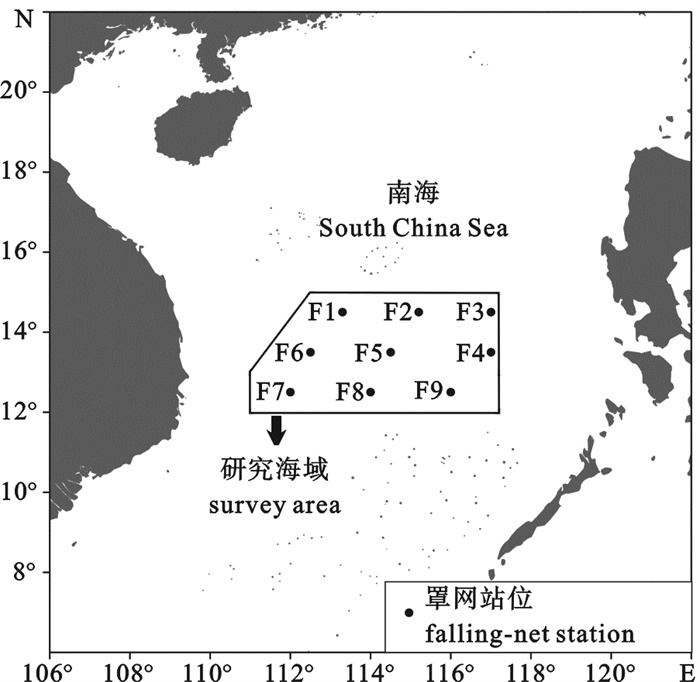
 下载:
下载:
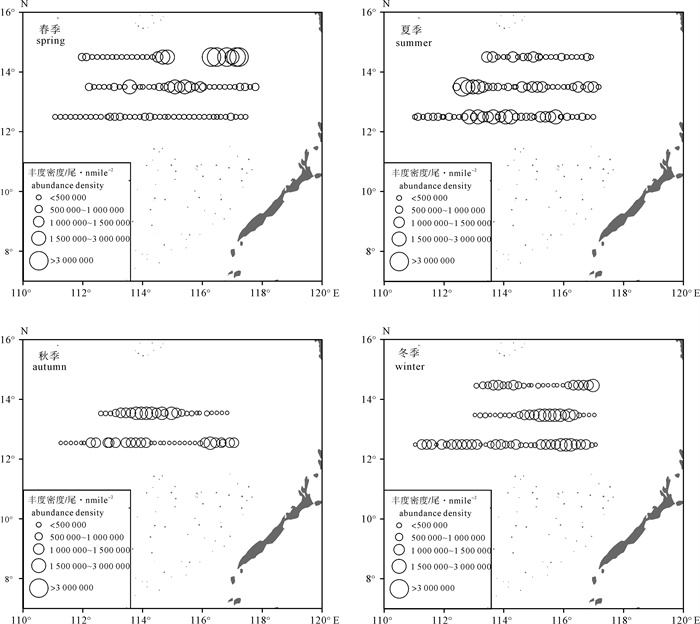
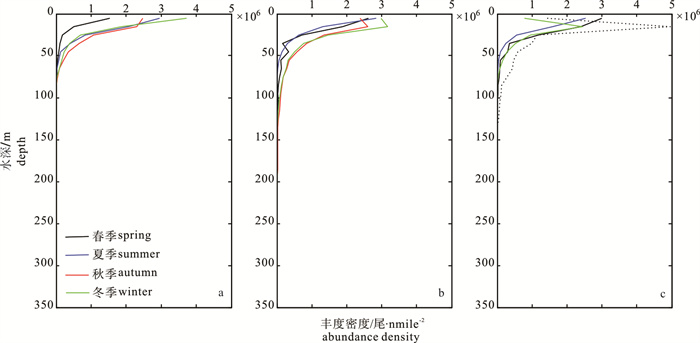
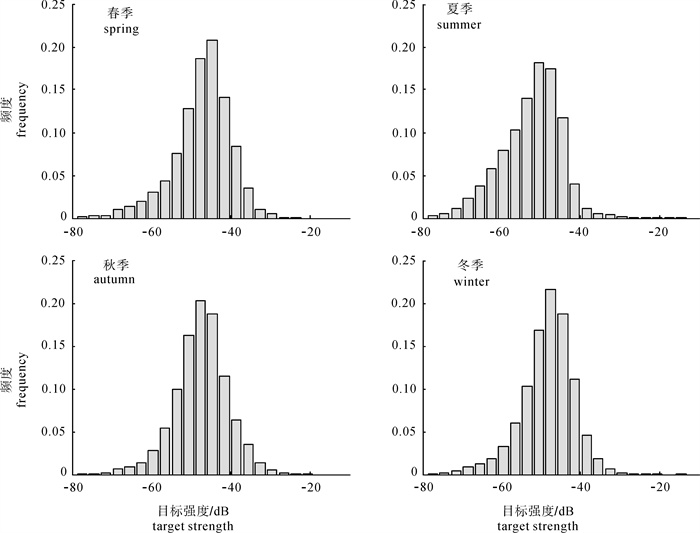
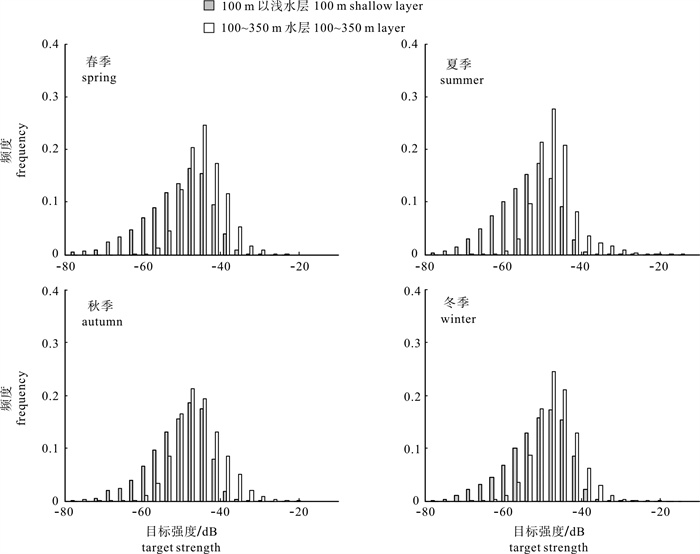
 粤公网安备 44010502001741号
粤公网安备 44010502001741号
